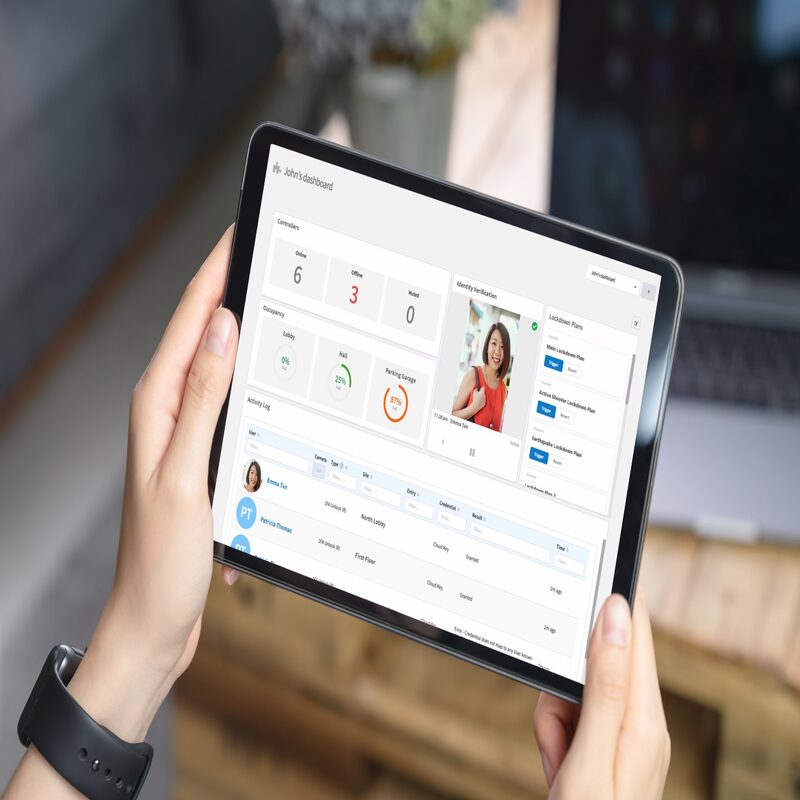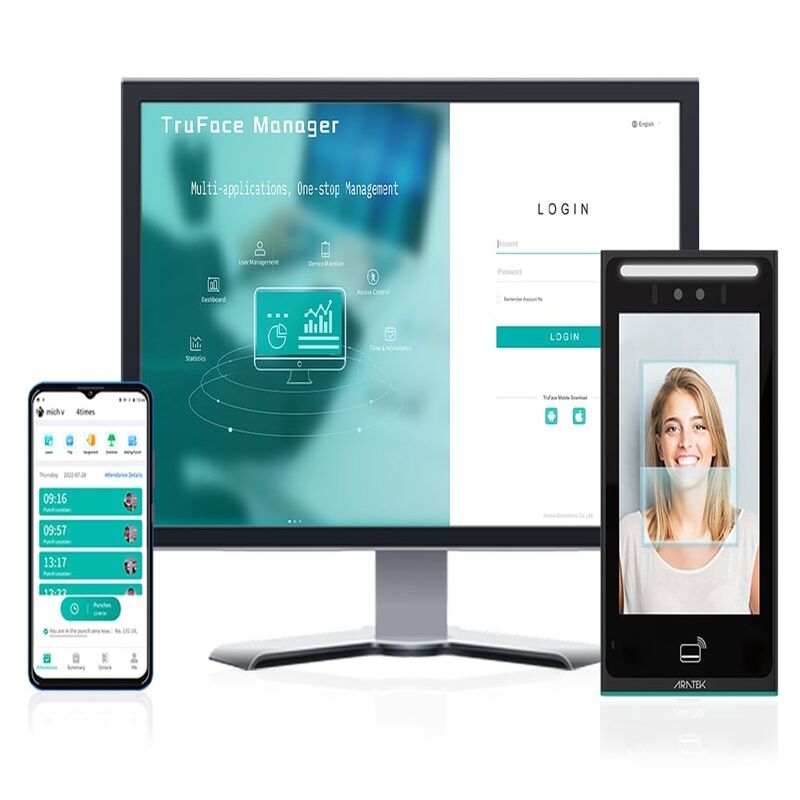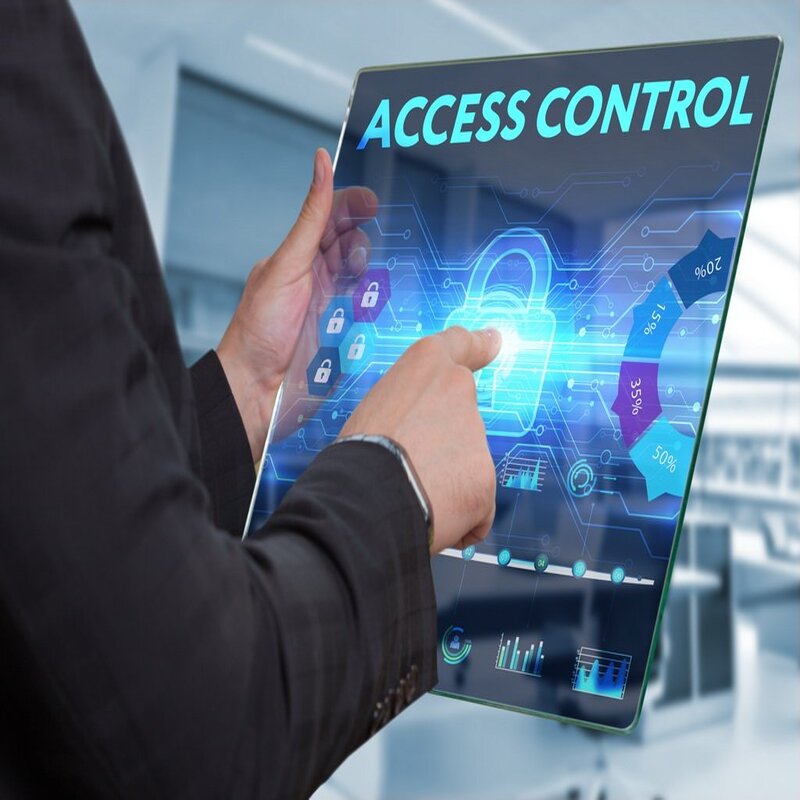Introduction to Access Control in Modern Security
Access control stands at the heart of facility security. It ensures that only authorized people enter specific areas. Modern access control systems go beyond traditional locks and keys. They use software and technology to grant or deny entry. This is important for many reasons.
Firstly, it comes down to safety. By controlling who can access a building, risks reduce. The right people get where they need to be. The wrong people do not. Secondly, there’s the matter of efficiency. Modern access control systems track entries and exits. They provide valuable data about how space is being used. Lastly, these systems protect sensitive data. They keep out those who might steal or damage information.
In essence, access control software is not just a barrier. It’s a smart management tool. It adjusts to your needs and shapes security around your specific situation. It works day and night, keeping a digital eye on the comings and goings of a place. This blog dives into the features of access control software. We look at what makes it essential in the modern age. Let’s explore the advantages it can bring to your facility.
Key Features of High-Quality Access Control Software
To ensure effective security, advanced access control software comes with a range of key features. These features are crucial for adapting to various business sizes, ensuring user convenience, maintaining strict data protection, and offering flexibility through integration options.
Scalability and Flexibility
Outstanding access control software grows with your needs. It should allow for easy expansion as your facility or number of users increases. A high-quality system will enable the management of more doors and users without replacing existing hardware. This adaptability is cost-efficient and prepares your system for future demands.
User-Friendly Interface and Configuration
Software should be simple to set up and use. A user-friendly interface means fast onboarding and straightforward management. It should accommodate easy floor plan imports and point-and-click configuration. It’s vital for efficient operation and quick training of new staff.
Robust Data Security and Privacy
Security software must protect against cyber threats and data breaches. Encryption and GDPR compliance are non-negotiable standards. Access rights should be strictly managed to ensure that personal data is only available to those authorized.
Seamless Integration Capabilities
Open access control systems integrate with external software and hardware. This allows for broader applications, including video surveillance and alarm management. Integration helps create a complete security ecosystem within your facility.

Advantages of Choosing the Right Access Control Solution
Choosing the ideal access control software is key for robust facility management. By selecting a system equipped with advanced features and strong integration capabilities, organizations can reap significant benefits in security and operational efficiency.
Support for Offline Locks and Third-Party Systems
Modern access control solutions sync with offline locks, aiding remote or design-restricted locations. They also link with third-party systems, ensuring a cohesive security network throughout any facility. This compatibility extends to various vendors, adhering to standards like OSS-SO for flexible implementation.
Enhanced Security with Multi-Factor Authentication
Access control software should offer multi-factor authentication for extra security. This means using cards, pins, biometrics, and more, all in combination. Such steps verify a person’s identity before granting access, crucial in sensitive areas.
Real-Time Monitoring and Event Management
Real-time updates and monitoring are vital. The right software provides instant event feedback, keeping tabs on access activities. It alerts staff to unauthorized attempts, helping manage security incidents as they happen.
Customizable Operations for Unique Requirements
Lastly, top access control software adapts to unique business needs. It allows for customization, setting specific user permissions and defining different access areas. This flexibility is essential for creating an access control system that aligns with an organization’s particular demands.
Application Scenarios for Access Control Systems
Access control software is versatile. It serves many different scenarios beyond just doors.
Comprehensive Parking Management
Access control systems manage vehicle entry into parking areas. They track the number of cars. They show real-time space availability. Drivers find spots faster. Security is improved through restricted access.
Efficient Visitor Management
Visitor management is much smoother with access control software. Guests get quick and secure entry. Their visits get logged for safety. Systems may integrate with visitor software for better flow.
Innovative Solutions for Threat Level Management
Different threat levels demand different security actions. Access control software adjusts doors and access rights based on risk. In emergencies, high threat levels trigger tighter security automatically.

Ensuring High System Availability
To keep an access control system running smoothly, high system availability is critical. It’s the backbone that allows for uninterrupted security operations, especially during unexpected system failures. For business owners and security managers, the goal is to have a system that’s always active, no matter what happens. Here’s how advanced access control software ensures this level of dependability.
Resilience in Critical System Components
An access control system’s reliability hinges on the robustness of its components. Resilient systems have features like redundant data paths and backup power options. This means if one part fails, the system still works. Key components like Master Access Controllers (MACs) provide backup operations. These maintain system functions if servers go down, ensuring doors still lock and unlock properly.
For top-tier resilience, MACs store millions of events. They keep a record of entries and exits, even with no server connection. This feature is crucial for maintaining security logs and monitoring access during downtime. Access control software with such resiliency also protects against data loss and system breaches.
Reliable Hardware-Software Integration
A strong access control system pairs software with compatible hardware. The software controls the hardware to lock and unlock doors. It also monitors access points in real-time. The hardware, like door controllers and readers, sends information to the software for decision-making.
The best systems ensure seamless communication between software and hardware. They share critical data instantly, allowing for quick responses to security threats. High-quality access control software and reliable hardware work together. They secure your facility by consistently applying your configured security rules. When this integration is done right, it minimizes downtime and keeps your environment safe.
In conclusion, to secure your facility effectively, choose access control software that promises and delivers high system availability. Look for resilient components and seamless hardware-software integration. Reliable access control systems work continuously, keeping your space secure and operations running smoothly.

Conclusion and Practical Tools for Implementation
Choosing the right access control software is crucial for security and efficiency. It protects people, data, and assets by controlling access to facilities. The benefits of advanced access control systems are clear. They range from scalability and user-friendliness to high data security and integration capabilities.
For best results, seek software that grows with your business. Look for easy setup, real-time monitoring, and robust cyber protection. Integration with other systems adds value. It turns your access control into a complete security solution.
Multi-factor authentication boosts security by verifying identities. Comprehensive parking management and visitor management streamline operations. Threat level management adapts security measures instantly during emergencies.
Reliability is non-negotiable for access control software. Choose a system with resilient components to ensure ongoing operations. Proper hardware and software integration guarantees smooth functioning. This also keeps your facility secure at all times.
To start, assess your facility’s needs. Consider how the software will integrate with current systems. Evaluate resilience features and how they maintain security during failures. Explore user-friendly interfaces for easy management by your security team.
Remember, advanced access control software offers more than just entry points. It provides a framework for safety and business intelligence. With the right tools and implementation, it’s a powerful ally in facility management. Selecting the right solution keeps your space secure and operations flowing smoothly.


